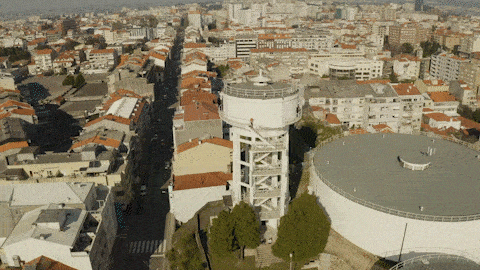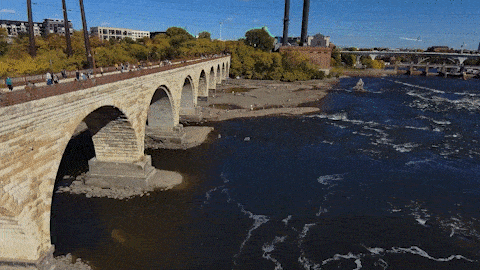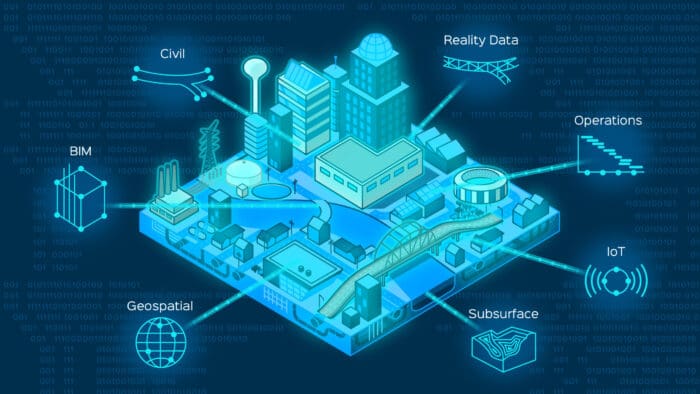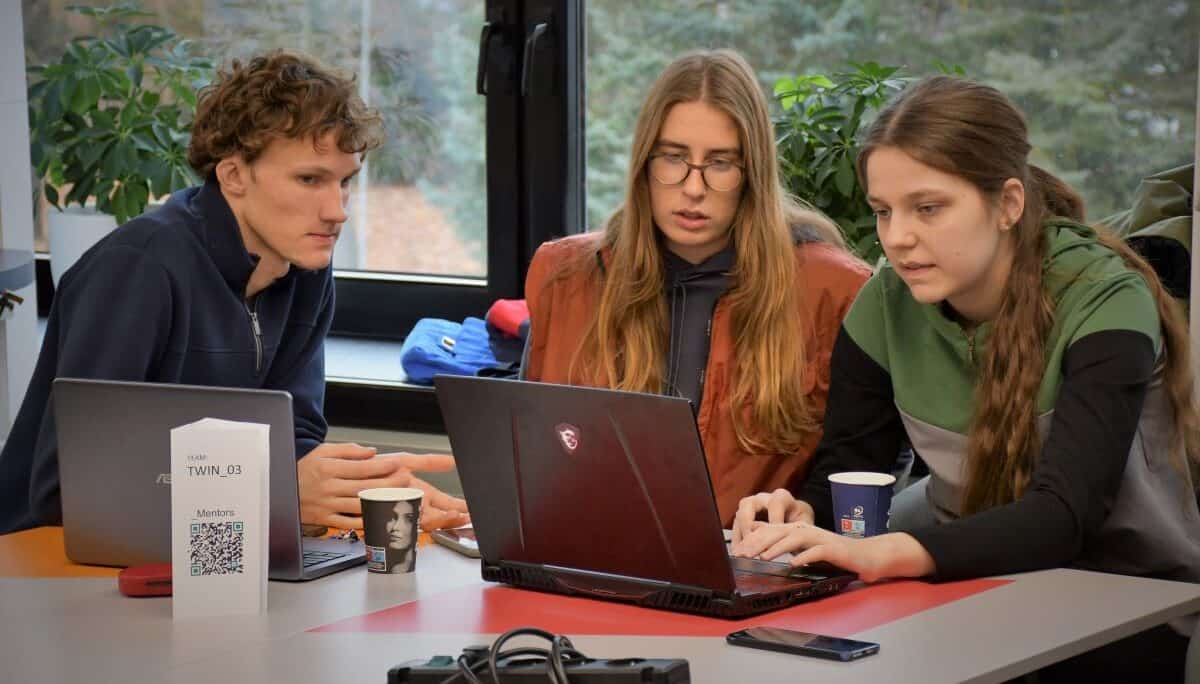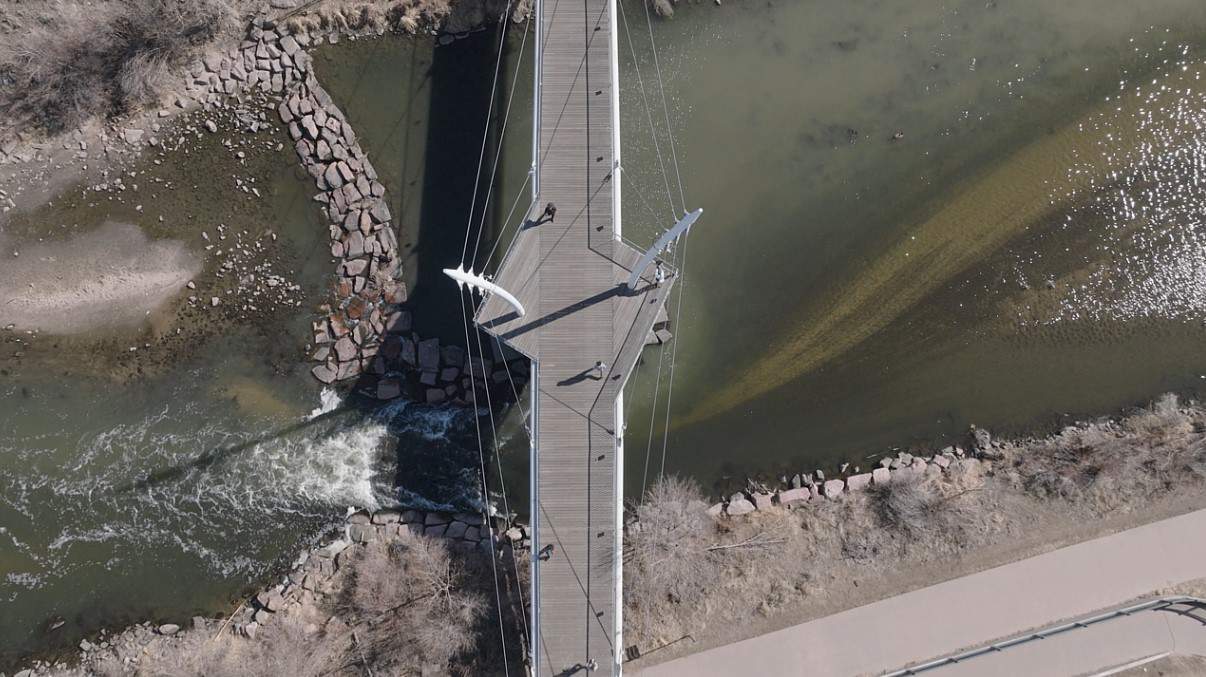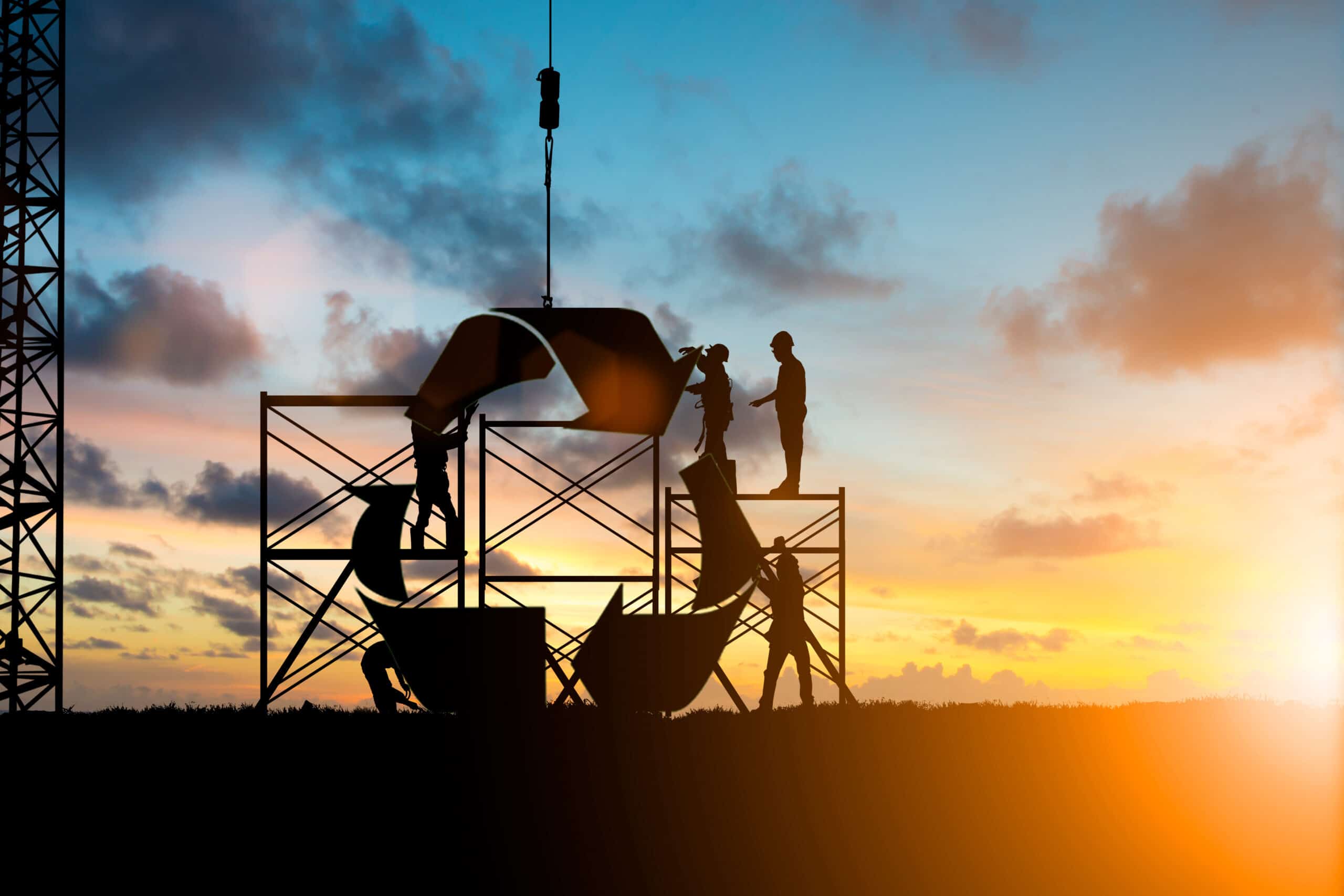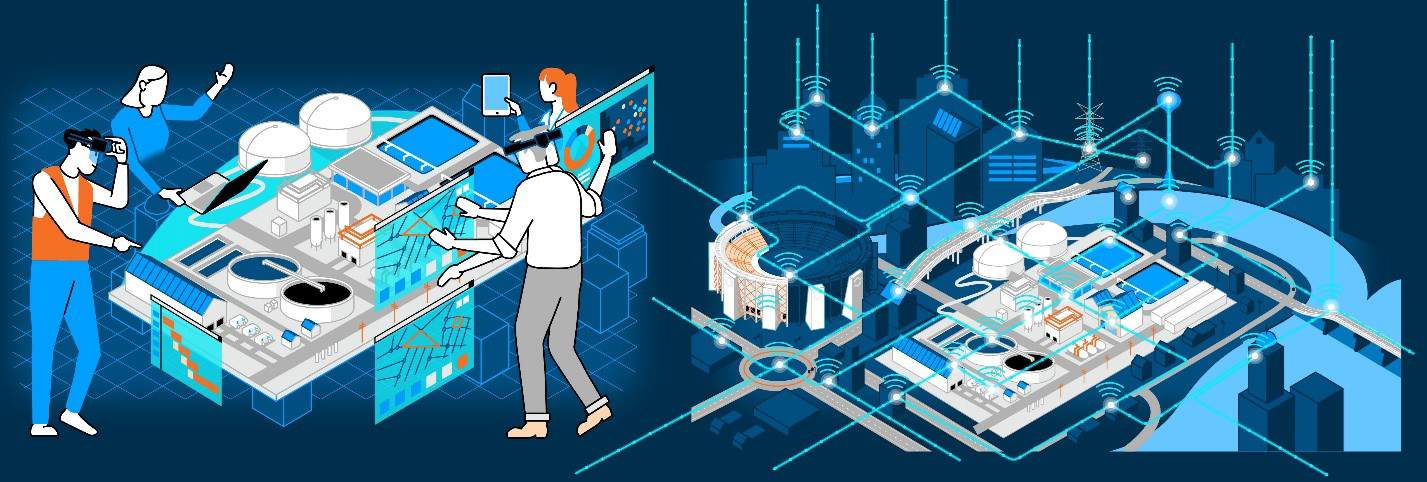Not too long ago, the application of digital twins in infrastructure seemed to be a distant reality. Today, we see a rapidly growing number of tangible examples of the benefits that digital twins are bringing to designing, building, and operating real-world assets. These benefits are timely given the increasing pressure to address infrastructure challenges across the globe.
Globally, governments and owner-operators are growing more concerned about the state of their infrastructure. Elements like smooth roads and transit, reliable power grids, and resilient water systems are critical for maintaining a solid standard of living. But even in the best-case scenario, the passage of time will cause degradation, exposing vulnerabilities that have the potential to cause disruptions to vital services or, worse, catastrophic failures.
It is not only just regular wear and tear owner-operators have to contain. Climate change is producing additional pressures on infrastructure. Powerful storms now wreak damage in unusual areas, extreme heat and cold cause power grids to buckle, and rising tides result in new concerns for coastal structures. Our infrastructure is being tested and needs to become stronger and more reliable to keep up.
Fortunately, owner-operators have new opportunities that could match these new challenges. Advancing technology provides innovative ways for organizations to not only repair and strengthen existing infrastructure but also create the infrastructure that is designed from the ground up to be more resilient to future climate variability. However, new technology can also bring its own challenges and uncertainty. How can infrastructure stakeholders best incorporate innovation into infrastructure development and operations? How can they be sure new innovations consistently bring value and help them meet their goals?
Governments and owner-operators don’t have to face these challenges alone. Engineering firms and pioneering organizations are evolving and incorporating advanced techniques into the design of new infrastructure and the revitalization of existing structures, demonstrating how other organizations can reap similar benefits. Realizing the importance of well-maintained infrastructure, government organizations are starting to fund grant initiatives that can help with the cost of adopting new technology. And organizations can realize long-term value with their technological investments by adopting a networking technique that benefits an array of organizations from Facebook to Microsoft.
You Are Not Alone
When designing infrastructure, all competent organizations keep an eye on future-proofing. A brand-new highway system could quickly become an unending debilitating expense if the bridges are substandard and need frequent repairs. Emerging technology is key to creating intelligent, sustainable designs that can endure future uncertainty and provide cost-effective services for many decades to come.
Frost & Sullivan, a growth strategy consulting and research firm, recently released their study “An Open Platform for Infrastructure Digital Twins,” where they share findings from the state of the market to strategic gains being realized.
The study notes that “the success of digital twins will be heavily influenced by the level of engagement from infrastructure organizations and asset owner-operators, and the creation of a robust ecosystem of technology developers serving the infrastructure community.”
Of course, intelligent, sustainable infrastructure is still a significant expense. Though advancing technology can take your investments as far as possible in the long term, the up-front cost and effort needed to incorporate new workflows can be intimidating, especially to stakeholders who might object to trying something new and relatively unproven.
INVESTING IN DIGITAL TWINS: Here’s Why Investors are Starting to Pay Attention
Government entities and qualifying owner-operators do not have to go it alone and figure out how to pay for better infrastructure solutions. In the United States, the Infrastructure Investment and Jobs Act (IIJA) does not only earmark billions of dollars toward the repair and development of infrastructure, but it also sets aside hundreds of millions of dollars specifically for the purchase of technology to help in infrastructure repair and development.
Though funding infrastructure-related technology supports IIJA’s overall goal of shoring up the country’s infrastructure, it benefits owner-operators well beyond the scope of the act. Users can eliminate the financial barrier to entry and use the new technology however they see fit. That way owner-operators can explore innovations, such as digital twins, 4D construction modeling, advanced reality capture, and machine learning, and learn how they can sharpen their work without worrying about the return on investment.
Build Your Ecosystem
It is not only outside examples and sources of new funding that can help provide confidence that new technology will provide ongoing, lasting value to infrastructure. A surprising factor shows how infrastructure development and operations can benefit from the same factor that gives many successful technology companies, from social media networks to technical solution innovators, much of their value. That factor is the network effect.
At its core, the network effect describes the incremental benefits a platform gains from new users, which results in the product becoming more valuable for all users. When Facebook first expanded beyond college students, for example, its value was relatively limited, as most users only knew a few people on it. As more joined, each individual could keep up with more friends and family members, becoming something millions of people use daily.
The network effect can also make new infrastructure design and operations technology more valuable as more people use it. Creating an infrastructure digital twin, a replica of an asset or a work site is an impressive feat. Yet, many companies were hesitant to use what seemed like new technology since they could not see the value. However, digital twins already proved their value back in 1960. When oxygen tanks on Apollo 13 exploded, NASA mission controllers matched the spacecraft’s conditions back on Earth and determined how to get the astronauts home.
The first infrastructure digital twin users found early success and set the path, showing how the replica could help them optimize design through improved visualization, plot out the construction process, or detect problems with operations. Subsequent users examined these first examples and found ways to improve on them. For example, more advanced use of sensors could not only detect a drop in water pressure but could also automatically determine the cause of the drop in a different part of the water system. As digital twin use grew and demonstrated new ways to enhance infrastructure, their perceived value grew, and in turn, any hesitation dropped away.
RELATED: Do More with Less, in Newer Ways
Some types of technologies benefit even more strongly from the network effect. Open-source, vendor-neutral digital twin platforms, such as Bentley’s iTwin Platform, are specifically designed to add more value as more users join, whether they use Bentley applications or not. In this environment, users can create bespoke solutions that modify or build upon existing solutions, rather than needing to create their desired digital twin from scratch. Once perfected, users can share their solutions with other users, which makes the design process easier and helps spark further innovation.
Our colleagues are working in partnership with engineering firms, governments, and owner-operators of infrastructure assets, who are on very different trajectories of their digital transformation journey. As John Sullens, Senior Technology and Innovation Consultant at Burns & McDonnell shared, “One key importance of having a digital twin is the ability to combine real-time asset/site data with physical dependency models, and intelligence from different platforms to more accurately scope future projects, reducing project risk from using erroneous records drawings.”
In short, progress begets more progress. What was once an almost intractable program management challenge will grow into an increasingly beneficial and interconnected ecosystem. NASA’s Apollo program showed that success takes a village. No single user or vendor can do it alone, but together, supported by open, vendor-neutral technology we can repair and enhance infrastructure for all.


